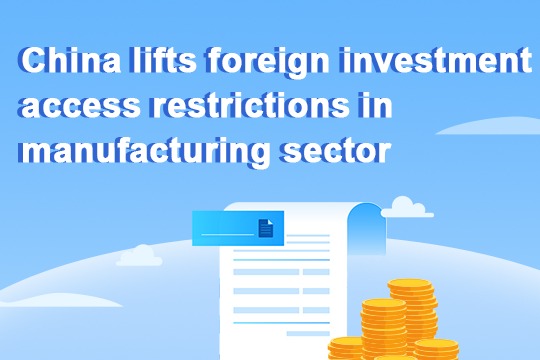STAR Market set to attract global attention


But biggest factor currently limiting foreign participation is its tiny size
Potentially handsome returns from fast-growing Chinese tech startups are likely to attract high foreign participation on Shanghai's Nasdaq-like STAR Market, after the market develops with a larger size and lower volatility, analysts from home and abroad said.
China's sci-tech innovation board, or the STAR Market, on the Shanghai Stock Exchange has received continuing interest from investors since it debuted on July 22, with ample liquidity and relatively strong stock price performance.
On Wednesday, 22 percent of the shares of STAR-listed firms changed hands on average, much higher than the 2.7 percent for the whole A-share market. Also, since the first batch of 25 STAR-listed firms debuted, their share prices had gained 6.4 percent on average as of Wednesday, versus a 1.5 percent loss for the benchmark Shanghai Composite Index over the same period.
The STAR Market, however, has seen limited participation from foreign investors, despite their notable presence on the main board, analysts said.
Tommie Fang, head of China equities at UBS, said the majority of foreign institutional investors still have a wait-and-see attitude toward the new board, pending declines in valuation levels and steadier market conditions.
At present, foreign investors can only access STAR-listed firms through the Qualified Foreign Institutional Investor program or QFII and the renminbi-denominated RQFII-which enable licensed international institutional investors to invest in mainland stock exchanges via quotas, while the Stock Connect channel is still unavailable.
Among the more than 300 foreign institutions with QFII licenses, only six had subscribed to the initial public offerings of the 28 firms listed on the STAR Market, including Goldman Sachs and Singaporean sovereign wealth fund GIC Private Ltd, according to financial information provider Wind Info.
"The biggest factor limiting foreign participation in the STAR Market is its tiny size," said Dong Dengxin, director of Wuhan University of Science and Technology's Finance and Securities Institute.
The new market, valued at about 640 billion yuan ($90.7 billion) in total, may have difficulty in digesting the funds of foreign institutional investors typically of a large amount and in providing a big enough investment target pool for them to select, according to Dong.
"Foreign investors' interest in the STAR Market may rise substantially after the market has more than 100 listed firms," he said.
Accounting firm PwC estimated in July that nearly 100 companies will hopefully get listed on the STAR Market this year. As of Wednesday, IPO applications of 118 firms are under review by the SSE and securities regulators, or awaiting financial statement updates to proceed with the review.
On top of a small market size, the high valuation-meaning potential high volatility-of STAR-listed firms may have also deterred cautious foreign investors that adopt value investing strategies, analysts said. Average price-to-earnings ratio, a typical valuation gauge, of STAR-listed firms remained as high as 151 on Wednesday.
But this constraint should weaken gradually, according to Lynda Zhou, equity portfolio manager at Fidelity International. Near-term performance may still be volatile, but STAR's market-oriented mechanisms will help prices to better reflect fundamentals gradually, Zhou said.
As the market size enlarges and early volatility fades, the STAR Market has the potential to attract high foreign participation in the long run, given the "impressive growth potential" shown by current STAR-listed firms, said Matt Weller, global head of market commentary at Gain Capital.
"The STAR Market offers the opportunity for foreign institutional investors to gain access to early-stage Chinese firms in the fast-growing technology and biotech sectors. Previously, it was nearly impossible for foreign investors to purchase shares in such companies," Weller said.
Such almost unprecedented investment opportunities are enabled by STAR's registration-based IPO reforms, with easier IPO standards for tech startups, according to analysts.
President Xi Jinping announced in November that China would launch the new board and pilot the registration-based IPO system. The latest tone-setting meeting of the country's leadership held in July required the STAR Market to properly implement its registration-based IPO system with information disclosure at its core and improve the quality of listed firms.
For the STAR Market to really draw foreign investors' interest and even receive their stand-alone allocation, the quality of listed firms should be the top determinant, said Wang Maobin, investment department chair at the University of International Business and Economics in Beijing.
"Listed firms with innovative business models unique across the globe will be the ultimate attraction of the STAR Market to overseas investors," Wang said.
Such companies are expected to emerge on the board as market size gets bigger, given China's merit of being an ideal testing ground for new business models and the STAR Market's fundamental market reforms, Wang said, adding that the STAR Market may have the highest foreign participation in all A-share sectors in the future.
Another push for foreign investors to buy into STAR's opportunities should be international equity indices' incorporation of STAR-listed firms after the market matures, said Wang Haoyu, managing director and head of capital markets of Beijing-based CreditEase Wealth Management.
While the SSE has announced to include the STAR Market into the benchmark SCI on Jan 22 next year, most index compilers may still mull their decisions over the new board, according to him.
Global index compiler MSCI Inc told China Daily it will "continue to monitor and provide further communication on the eligibility of the STAR Market prior to the November 2019 Semi-Annual Index Review".
Analysts said MSCI's inclusion of STAR-listed firms may come only after they become eligible on the Shanghai-Hong Kong Stock Connect. This is in turn partially dependent on the inclusion of the firms, if without shares listed in Hong Kong, into the SSE 180 Index or SSE 380 Index, which may take place by the end of this year at the earliest.





































